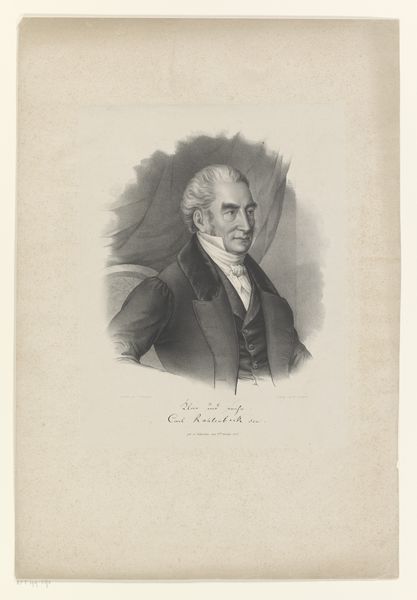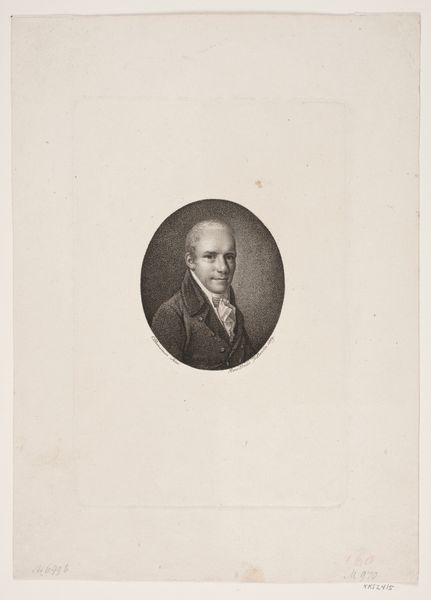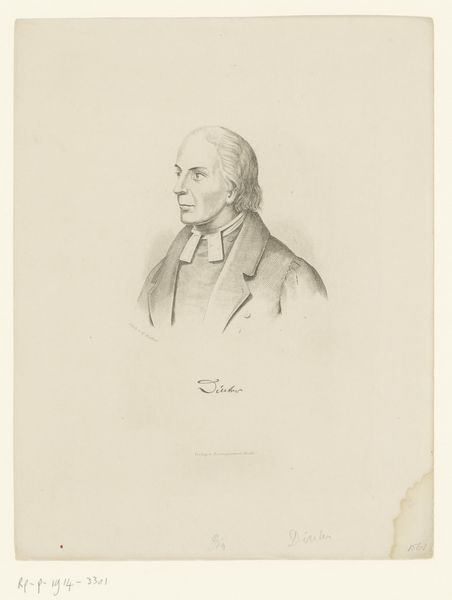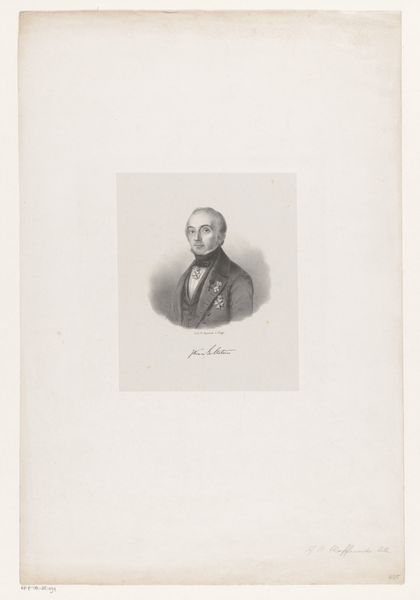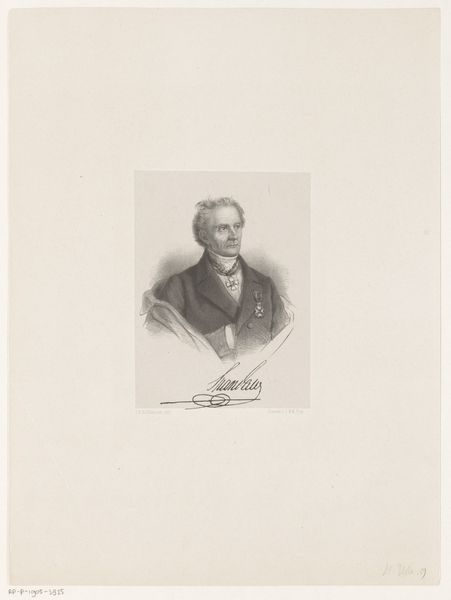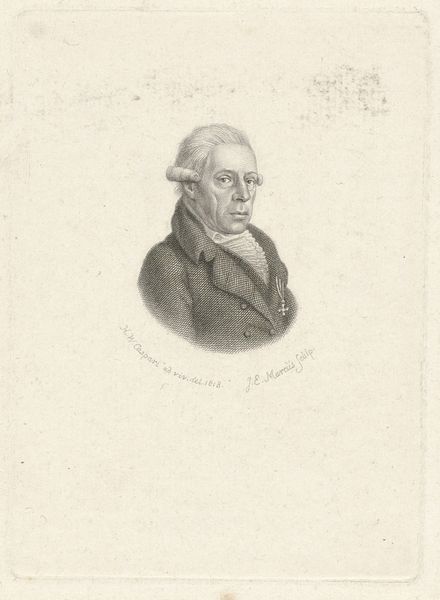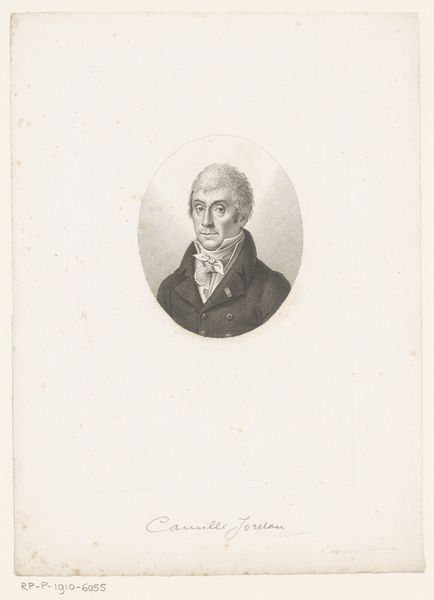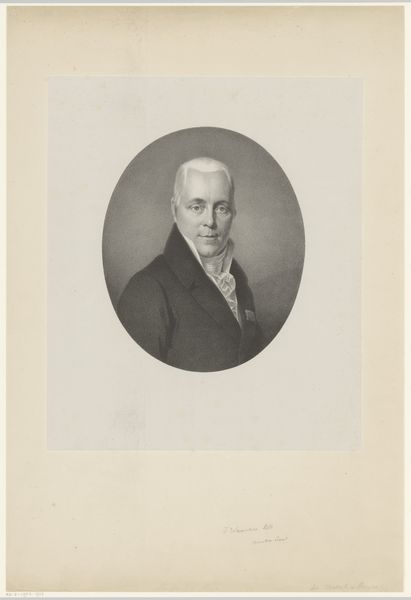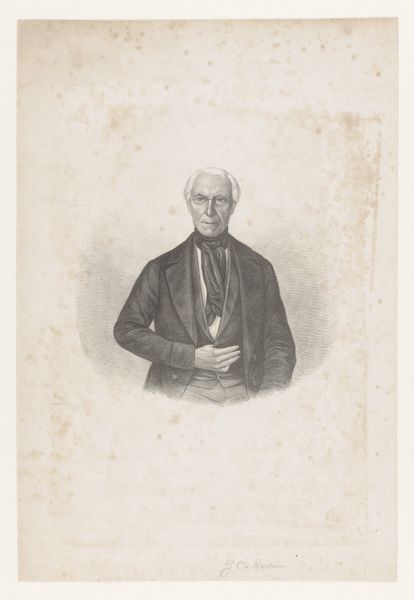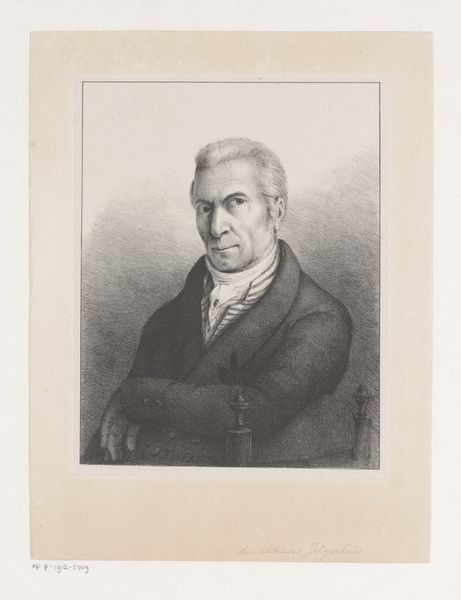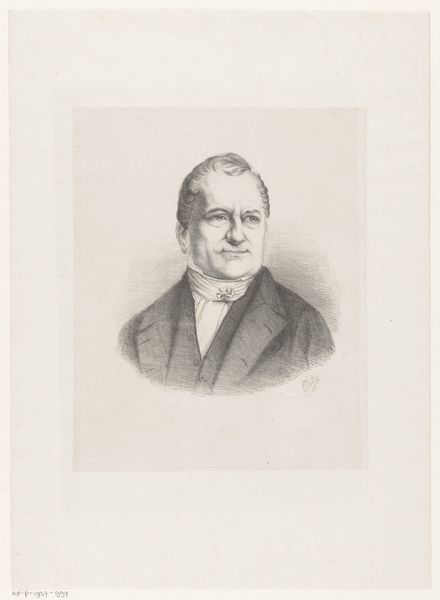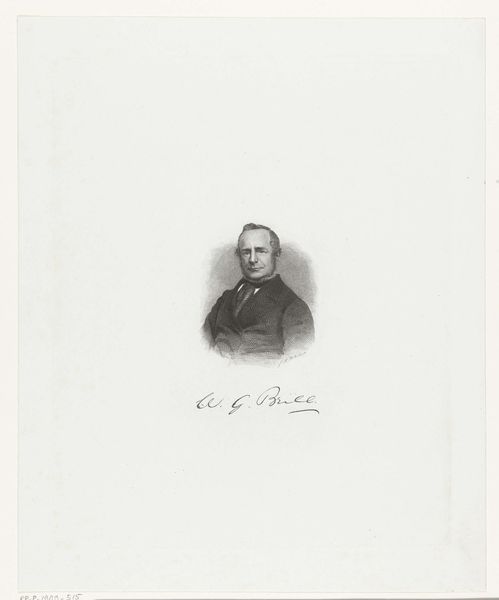
Portret van Frans II Josef Karel, Rooms-Duits keizer 1841 - 1844
0:00
0:00
hermannhirschpinhas
Rijksmuseum
engraving
#
portrait
#
neoclacissism
#
caricature
#
history-painting
#
engraving
#
realism
Dimensions: height 217 mm, width 137 mm
Copyright: Rijks Museum: Open Domain
Hermann Hirsch Pinhas created this portrait of Franz II Josef Karel, the Holy Roman Emperor, using etching and engraving techniques. The artwork is defined by a study of tonal variations, achieved through fine, precise lines. Look closely, and you'll notice the stark contrast between the sharp, detailed depiction of the Emperor's face and the softer, almost ethereal rendering of his coat and the background. This contrast isn't accidental; it serves to isolate the Emperor, emphasizing his individual presence. The artist also uses hatching and cross-hatching to build up the shading, giving volume and depth to the figure. The texture of the paper itself becomes part of the aesthetic experience, creating a tactile quality that invites closer inspection. What is interesting is how the artist employs a semiotic system to convey power and authority. The Emperor's gaze, the formal attire, and the very precision of the engraving all contribute to a carefully constructed image of imperial dignity. Yet, the softness in the background hints at a destabilization of these fixed meanings, suggesting a more nuanced interpretation of power.
Comments
No comments
Be the first to comment and join the conversation on the ultimate creative platform.
